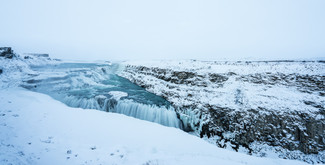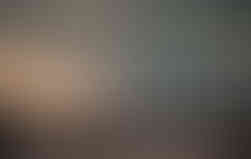Lights, Camera, Action: 81 hours in ICELAND
- robinbootphotography
- Jan 24, 2017
- 6 min read

I've always been fascinated by the wilderness and, having seen various dramatic photos taken by friends, Iceland seemed like the ideal adventure to kick off 2017. In recent times, I've been bombarded by emails offering budget, all inclusive, sightseeing trips to Iceland but the idea of being cooped up in a bus with a hoard of tourists didn't appeal. There were 4 of us travelling so we decided to book flights, an AirBnB and, most importantly, a car independently to give us more freedom... and it was a great decision (and worked out cheaper)! We arrived at Keflavik airport at about 11am on Wednesday and flew out at 8pm on the Saturday, giving us 4 days and 3 nights to explore.
Iceland is a bigger than I realised and its roads weave in and out of an almost Martian landscape which has been forged over the centuries by volcanic eruptions, tectonic plate movement and glacial abrasion. Despite blizzards, strong winds and driving rain, we still clocked up well over 600 miles (I'm grateful for upgrading to a 4x4). These are my highlights...
Day 1:
With only a few hours of daylight, we set out straight from the airport to some of the recommended sights in the "Golden Circle" (a popular tourist route in the South West of the island). The trip was very nearly a photographic disaster as my main camera (Sony A7Rii) broke after only 3 photos due to a run in with an angry geyser who decided to let off some steam in my direction! Fortunately I had my A7S as a back-up (which actually performs better in the often low light conditions)
If you visit Iceland, I can recommend checking out the geysers at Geysir and then going a little bit further to see the huge waterfall at Gullfoss. With fading light, and a check-in deadline to meet (which we actually missed), we didn't spend too long there but it was an impressive view. The falls completely frozen and the surrounding terrain was covered in snow...
(click image to enlarge)
As Northern Lights rookies, we decided to book on a tour for our first night. There are several operators who provide these tours and take you to where they think the lights will be most visible on the given evening. Most offer customers a free return visit if they don't see the lights the first time. We were taken to Selfoss, about an hour from Reykjavik by bus. There were about 15 bus loads of people in the same place so we trekked away from the masses to try and find a bit of serenity and it paid off. Aurora Borealis activity was due to be high but there was a fair bit of cloud cover. We did get glimpses of the lights but they showed up a lot better on camera compared to the naked eye. The sky itself was beautiful with constellations twinkling through the gaps in the clouds (see the second photo below) and then all of sudden bits of green started appearing in the photos, including one very intense but ephemeral band, before fading back to a normal night sky. If you're going on a Northern Lights tour, I seriously recommend taking a camera with manual settings as well as a tripod. The photos below were all taken with a shutter speed of 8 to 10 seconds, aperture of F4 and at ISO 8000 (the Sony A7S's low light capabilities is without rival in these situations).

(click images below to enlarge)
Day 2:
After some much needed sleep (we had been awake for 22 hours the previous day), we decided to head down the South coast towards Vik with a few stops along the way. Our first port of call was Gluggafoss waterfall, not far from the famous Eyjafjallajökull volcano which erupted in 2010.

After playing around with some long exposures (and building a snowman), we got back on the road. The drive itself was beautiful despite being somewhat treacherous at times. We stopped in at the Black Beach, so named because of (you guessed it) its black sand. Having already lost one camera to the Norse Gods, I decided not to take photos in the gale-force wind and rain. It was worth popping in and using my eyes instead of my camera for a change as the hexagonal rock formations, cliff stacks in the sea and black sand are quite intriguing.
We arrived in Vik later than expected (surprise surprise) but the twilight made this little fishing town, nestled in the snowy mountains, even more picturesque...


We were faced with a long drive back to Reykjavik in dodgy conditions but decided to stop at Skogafoss... well, I decided to stop at Skogafoss as the other 3 didn't see the appeal of standing in the driving sleet in the pitch black - it was so dark that I couldn't actually see the waterfall! I had a head-torch to find the icy path (I've now perfected my Bambi on ice impression) and headed to where I could hear the sound of the falls. I was shooting blind so it took me 4 or 5 attempts to get the camera pointing in the right direction and in focus. Finally, my A7S did manage to produce this rather eerie photo before I slipped and slid my way back to the car.

Day 3:
By day 3, the temperature had risen significantly, the snow had turned to rain and entirely different green landscape had been revealed. We headed off to Þingvellir National Park where the Eurasian and North American tectonic plates meet. Again, the weather conditions meant I chose not to risk my camera but it was an interesting experience as we could walk through the ravine and straddle the plates (there was no lava, in case you were wondering if I've come back with roasted chestnuts). This was also the site of Iceland's first parliament and has a rich history of punitive drowning. If you're brave enough and want to relive the experience, you can actually go scuba diving in between the plates. Maybe next time!
The afternoon was dedicated to some much needed rest and recuperation. We decided to avoid the tourist masses of the Blue Lagoon (Iceland's most popular geothermal pool) and instead head to the Secret Lagoon, the country's oldest geothermal swimming pool. The dart between the changing room and the water was a bit nippy (the air temperature was about 3'C) but the water was wonderful and warm thanks to the natural hot springs continually heating the pool (like most of the hot water in Iceland, it does smell of sulphur but you get used to it after a while). I took a little waterproof camera in with me and I was rewarded with a sunset (modelled here by Rebecca)...

As the weather was good and the Secret Lagoon was only 20 minutes from Geysir, we went back to get the hair of the dog that bit me on day one... this time I kept my distance and double-checked the wind direction before taking my camera out!


It was our final night so we headed out into Reykjavik for dinner and then decided to go light hunting. The advantage of having a car is that we could move to where the sky was clearest and thus have a better chance of sightings. We kept a close eye on the forecast at vedur.is- a website that proved invaluable to us. It was blowing a gale (again) and we had intermittent horizontal rain (again) but the tactic paid off and our sightings were much better than on night one and clearer to the naked eye...


Day 4:
Another rainy day which meant no camera but we went on a walking tour of Reykjavik which was both fun and informative. I can highly recommend checking out City Walk as the guide was great and the tour is free (you pay what you think it's worth at the end). With an hour to kill before heading to the airport, we went to the Settlement Museum which looks at how the island came to be inhabited. Vikings only arrived and settled in Iceland in the 9th Century so it's much easier to chart the history of the country accurately - worth a look.
It was a whirlwind visit and we all got quite cold and wet at times but I fell in love with the country. I'd love to go back in summer months as I imagine the experience would be quite different. I would definitely opt for the same system of piecing together the trip instead of a one-size-fits-all, package deal. Food and drink is very expensive but having an apartment allowed us to make packed lunches and our own breakfasts to keep the costs down. Most of the bus tours cost between £50 and £80 but the sights themselves are free (hence why a car makes sense).
To give you an idea of pricing if you're planning a trip:
- Return flights worked out at about £100/person.
- The apartment in central Reykjavik (which in theory could sleep up to 9 people) was about £400 for 3 nights, split between 4 of us.
- 4x4 hire was £230 for 4 days, split between 4 of us.
- Northern Lights tour on day 1 was £50/person.
- Petrol worked out at about £180 for the entire trip (we did a lot of driving)
I hope you've enjoyed this blog. Please follow me on Facebook and Instagram for more frequent updates. For enquiries, you can get hold of me on info@robinboot.com
Skál! (cheers!)
R

























































Comments